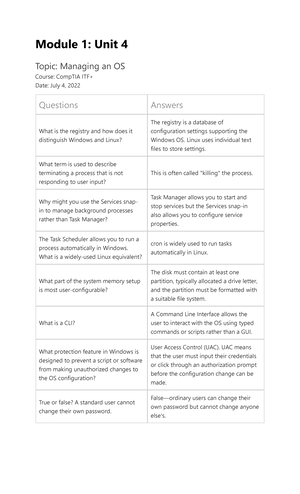- Information
- AI Chat
Was this document helpful?
Define the ff. terms - Database Management
Course: BS Computer Science (BSCS)
225 Documents
Students shared 225 documents in this course
University: University of Perpetual Help System DALTA
Was this document helpful?

Asynchronous Activity 2.1
Define the following terms:
1. data structure
- Data Structure can be defined as the group of data elements that provides an
efficient way of storing and organizing data in the computer so that it can be used
efficiently. Some examples of Data Structures are arrays, Linked List, Stack, Queue,
etc. Data Structures are widely used in almost every aspect of Computer Science i.e.,
Operating systems, Compiler Design, Artificial intelligence, Graphics, and many more.
2. data manipulation
- A data manipulation language (DML) is a computer programming language used for
adding (inserting), deleting, and modifying (updating) data in a database. A DML is
often a sublanguage of a broader database language such as SQL, with the DML
comprising some of the operators in the language.
3. data integrity
- Data integrity is the overall completeness, accuracy, and consistency of data. This can
be indicated by the absence of alteration between two instances or between two
updates of a data record, meaning data is intact and unchanged.
-
- Data integrity is usually imposed during the database design phase through the use
of standard procedures and rules. It is maintained through the use of various error-
checking methods and validation procedures
4. primary key
- A primary key is a special relational database table column (or combination of
columns) designated to uniquely identify each table record.
-
- A primary key is used as a unique identifier to quickly parse data within the table. A
table cannot have more than one primary key.
5. composite key
- In database design, a composite key is a candidate key that consists of two or more
attributes (table columns) that together uniquely identify an entity occurrence (table
row).
6. domain constraints
- Domain constraints are the most elementary form of integrity constraint. They are
tested easily by the system whenever a new data item is entered into the database.






